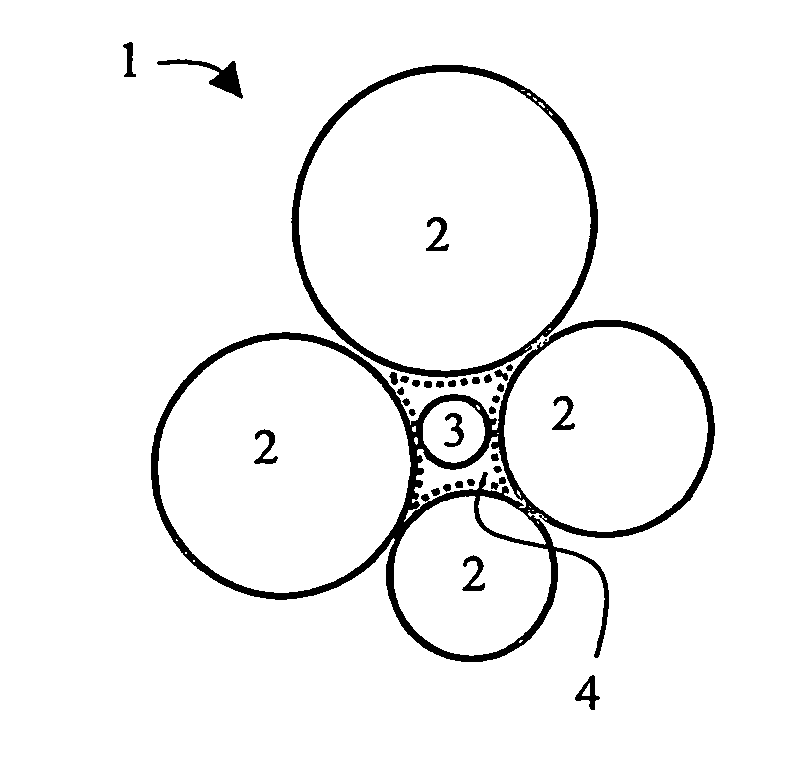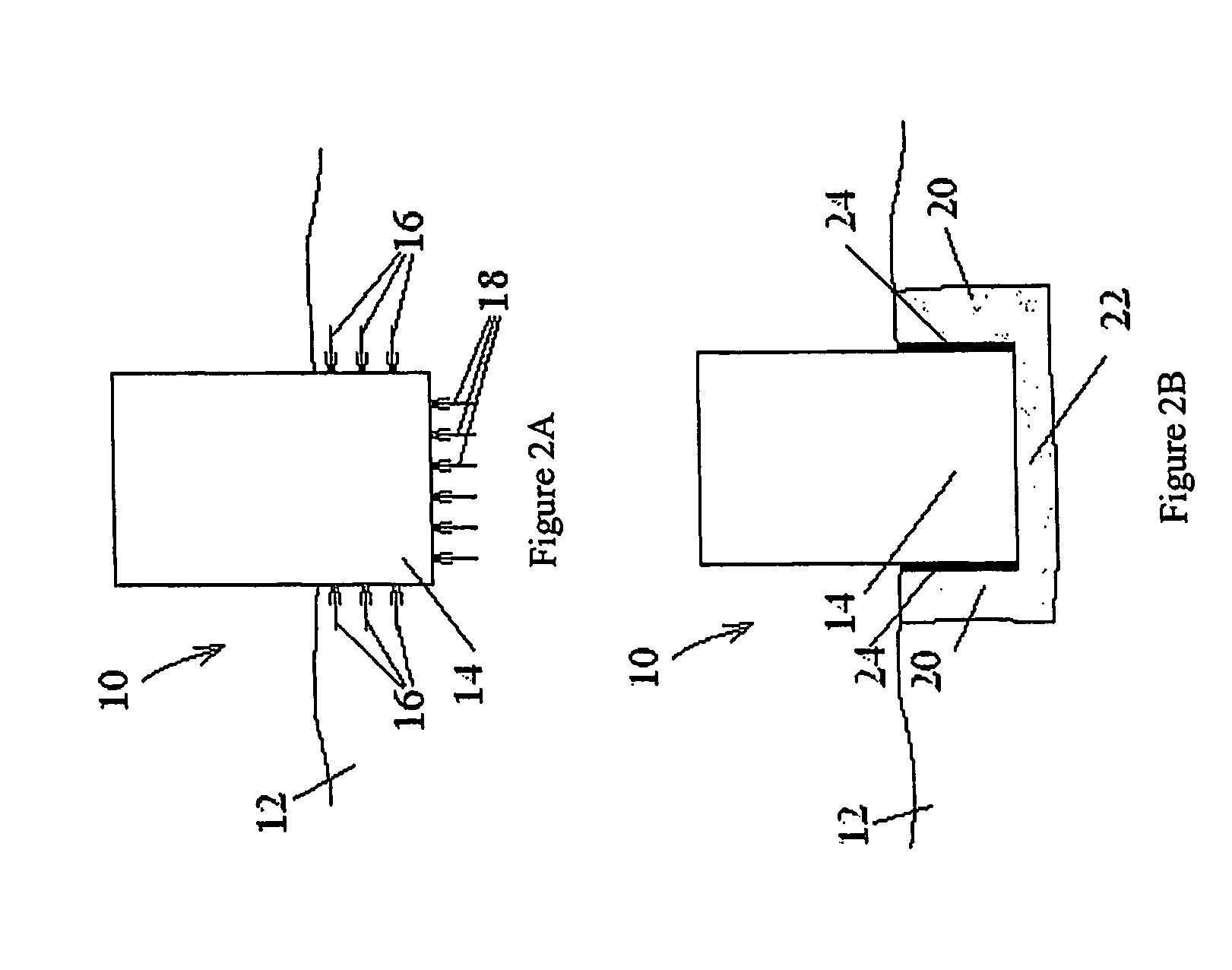Hydrophobic composites and particulates and applications thereof
a technology of hydrophobic composites and particulates, applied in the field of hydrophobic composites, particulates and freeflowing aggregates, can solve the problems of local reduction of construction strength, crake in concrete, corrosion and deformation of steel bars or wire fabrics, etc., and achieves improved physical and chemical performance, improved performance, and cost-efficient hydrophobic
- Summary
- Abstract
- Description
- Claims
- Application Information
AI Technical Summary
Benefits of technology
Problems solved by technology
Method used
Image
Examples
example 1
Preparation of a Hydrophobic Powder—General Procedure
[0422] As is described hereinabove, the hydrophobic powder of the present invention includes one or more selected impure elements that have a hydrocarbon attached thereto and optionally hydrophobic fumed silica. The composition of the hydrophobic powder is predetermined according to the desired application.
[0423] In cases where the selected hydrophobic powder does not include hydrophobic fumed silica, the hydrophobic powder is preferably prepared by a surface reaction of colloidal particles of one or more selected impure element (e.g., calcium carbonate, magnesium carbonate, calcium oxide, etc.) with a fatty acid having at least 10 carbon atoms in its hydrocarbon chain, to thereby obtain a hydrophobic derivative of the element in a powder form. A representative example of such a hydrophobic powder is Calcium Stearate, which is a commercially available powder that is presently used in pharmaceuticals and plastics. However, such a...
example 2
Preparation of Hydrophobic Composites—General Procedure
[0426] Drying the core material: The core material (as is defined hereinabove) is dried at a temperature of at least 104° C., until its moisture level is reduced to below 1 weight percentage. This procedure is carried out in a closed mixing vessel equipped with a suction port fitted with a valve enabling opening and closure. Alternatively, a pre-dried core material is placed in the mixing vessel described above and is heated to a temperature of at least 70° C.
[0427] Coating the core material with an adherent layer: Preliminary preparation of the adherent layer mixture is carried out in a mixing vessel at a temperature of 40-90° C., during about 10 minutes (the composition of the mixture is determined as is described hereinabove). The adherent mixture is then added hot as it is into the mixing vessel described hereinabove, which contains the dry core material. The resulting mixture of the dry core material and the adherent laye...
example 3
Preparation of Hydrophobic Composites in a Cold Process—General Procedure
[0431] The core material is dried as is described hereinabove to reach moisture content less than 1%. The dried core material may be stored in a closed dry place to be used for coating when cold, without any need of re-heating.
[0432] An adherent layer mixture, which preferably comprises in this procedure 7% polyurethane and 93% ethyl acetate, is prepared as described above and is then added to the dried core material. The quantity of the obtained adherent layer in this process typically ranges between 3 and 7 weight percentages of the dry core material weight. The resulting mixture is mixed at room temperature, for about 10 minutes, until the ethyl acetate is vaporized down to a level of 0%. The evaporated ethyl acetate may be recycled up to about 80% of its content.
[0433] A hydrophobic coat mixture of choice is then added as is described above and the resulting mixture is mixed for about 5 minutes.
[0434] T...
PUM
| Property | Measurement | Unit |
|---|---|---|
| particle size | aaaaa | aaaaa |
| particle size | aaaaa | aaaaa |
| particle size | aaaaa | aaaaa |
Abstract
Description
Claims
Application Information
 Login to View More
Login to View More - R&D
- Intellectual Property
- Life Sciences
- Materials
- Tech Scout
- Unparalleled Data Quality
- Higher Quality Content
- 60% Fewer Hallucinations
Browse by: Latest US Patents, China's latest patents, Technical Efficacy Thesaurus, Application Domain, Technology Topic, Popular Technical Reports.
© 2025 PatSnap. All rights reserved.Legal|Privacy policy|Modern Slavery Act Transparency Statement|Sitemap|About US| Contact US: help@patsnap.com



